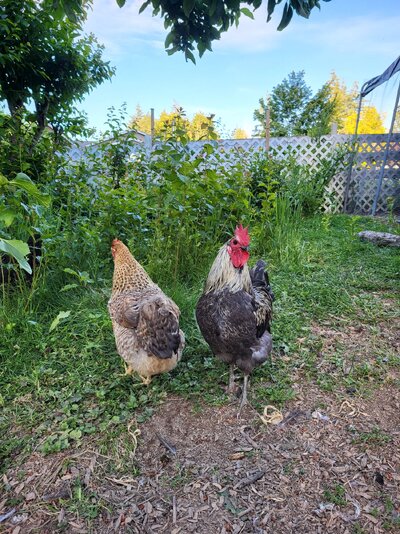TheWannabeFarmer
Chirping
- Apr 24, 2021
- 20
- 27
- 56
I have a blue Silverudds isbar rooster over cream legbar and bielefelder hens. I thought this would result in blue or black chicks that are sex linked, but some are coming out very similar in color to the hen color..
Is this a possibility??
I will add photos of the chicks in question
Is this a possibility??
I will add photos of the chicks in question






